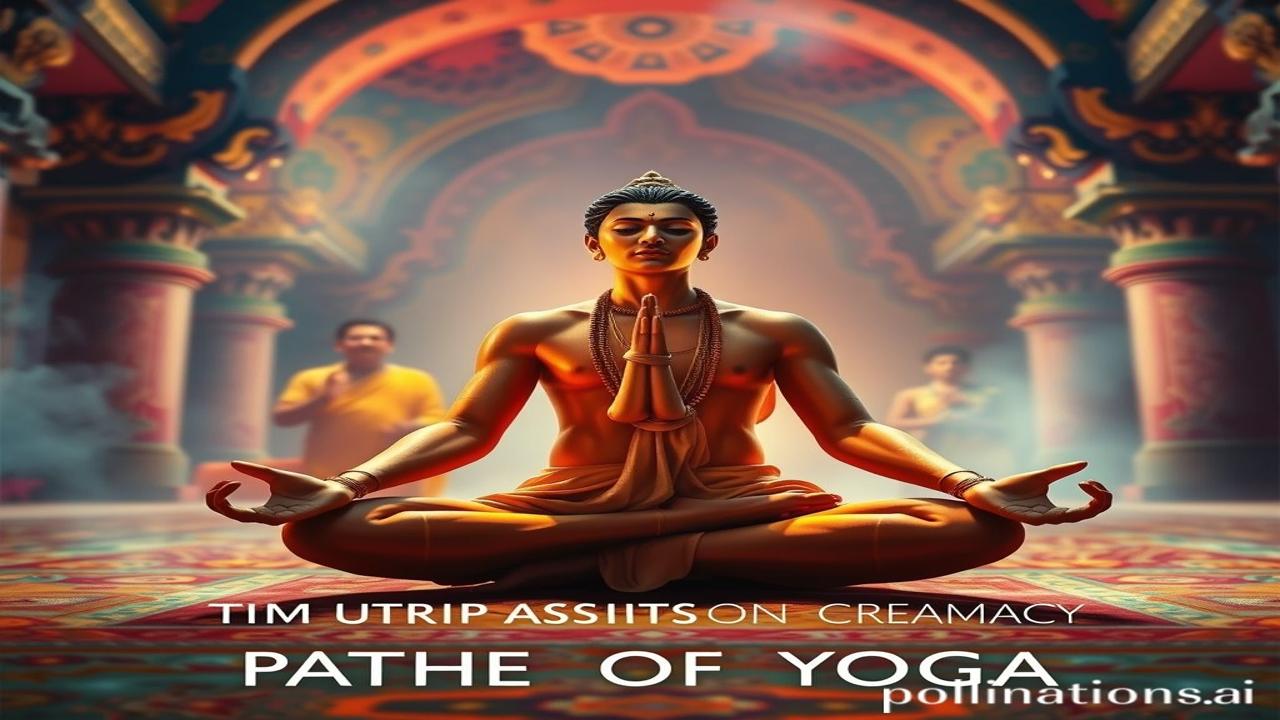Yoga ki Rahein: A Journey Through Different Paths
Kabhi socha hai, jab hum aankhen band karke ‘Om’ ka jaap karte hain, toh hum kitni purani parampara se jud rahe hote hain? Ek aisi parampara jo sirf asanas tak hi seemit nahi hai, balki zindagi ko dekhne, jeene aur samajhne ke alag-alag raaste dikhati hai. Let’s explore the fascinating world of Yoga!
Yoga Kya Hai, Aur Kab Se Hai? (What is Yoga and When Did it Originate?)
Yoga, basically, ek Sanskrit word hai jiska matlab hai ‘jodna’ ya ‘ek hona’. It’s not just about twisting your body into fancy poses. It’s about connecting with yourself, with nature, and with the divine. Aur yeh shuru kab hua? Well, its roots go back 5000 years, to the Indus Valley Civilization! Imagine, woh zamane mein bhi log apne andar shanti dhoond rahe the.
Isliye Yoga itna important hai kyunki yeh sirf physical exercise nahi hai. It’s a holistic approach to life that integrates the mind, body, and spirit. Yeh ek dharohar hai, ek legacy jo humein apne ancestors se mili hai.
Yoga ke Vividh Paths: Exploring Different Margas
Yoga sirf ek tarike ka nahi hai. Just like there are many rivers leading to the ocean, Yoga has many paths, or ‘margas’, each suited to different personalities and life goals. Let’s explore a few:
Karma Yoga: Seva ka Marg (The Path of Action)
Karma Yoga matlab, selfless action. Bina phal ki chinta kiye, dusron ki seva karna. Think of it as being a part of something bigger than yourself.
Imagine a farmer, waking up before dawn, tending to his fields, not just for himself, but for his entire community. Ma Rukmini ne aaj gareebon ko bhojan bataya, bina kisi expectation ke. That’s Karma Yoga in action. Karma yogi woh hai jo har kaam ko ek offering samajhta hai, ek yagya.
Bhakti Yoga: Prem aur Samarpan ka Marg (The Path of Devotion)
Bhakti Yoga is the path of love and devotion. It’s about surrendering to a higher power through prayer, chanting, and rituals.
Imagine a temple, filled with the fragrance of incense and the sound of devotional songs. A devotee, lost in prayer, tears streaming down her face, feeling an overwhelming sense of love for her deity. Yeh Bhakti Yoga hai. It’s about cultivating a deep, personal connection with the divine. Meera Bai, for example, epitomized Bhakti Yoga with her unwavering love for Krishna.
Jnana Yoga: Gyan ka Marg (The Path of Knowledge)
Jnana Yoga is the path of wisdom and self-inquiry. It involves rigorous study, contemplation, and introspection to realize the true nature of reality.
Imagine a scholar, poring over ancient texts, trying to unravel the mysteries of the universe. Or a hermit, meditating in a cave, seeking enlightenment through self-reflection. Yeh Jnana Yoga hai. It’s about using your intellect to understand the ultimate truth. Adi Shankaracharya, a great philosopher, was a prominent exponent of Jnana Yoga.
Raja Yoga: Ashtanga ka Marg (The Path of Royal Discipline)
Raja Yoga, also known as Ashtanga Yoga, is the path of self-control and discipline. It involves following eight limbs, or ‘angas’, to achieve mastery over the mind and body. These eight limbs include:
- Yamas (Ethical Restraints): Ahimsa (non-violence), Satya (truthfulness), Asteya (non-stealing), Brahmacharya (continence), Aparigraha (non-possessiveness)
- Niyamas (Observances): Shaucha (purity), Santosha (contentment), Tapas (discipline), Svadhyaya (self-study), Ishvarapranidhana (surrender to God)
- Asana (Physical Postures): Practicing physical postures to purify the body and prepare it for meditation.
- Pranayama (Breath Control): Regulating the breath to calm the mind and increase energy.
- Pratyahara (Withdrawal of the Senses): Turning inward and detaching from external distractions.
- Dharana (Concentration): Focusing the mind on a single point.
- Dhyana (Meditation): Sustained concentration, leading to a state of deep absorption.
- Samadhi (Enlightenment): A state of complete union with the divine.
Patanjali’s Yoga Sutras provide a comprehensive guide to Raja Yoga, outlining the principles and practices necessary for achieving self-realization.
Ajkal ke Zamane Mein: Yoga ka Prabhav (Cultural Significance Today)
Aaj kal, Yoga sirf mat exercises tak seemit nahi hai. It’s become a global phenomenon. Lekin yaad rakhna, yoga sirf stretching nahi hai. It’s a way to connect with your inner self, to find balance and peace in a chaotic world. We see its influence everywhere, from wellness retreats to corporate mindfulness programs. Yeh Bharatiyata ka ek important hissa hai, a reminder of our rich cultural heritage.
Ek Mazedar Fact: Yoga aur Psychology (Fun Fact)
Log aksar samajhte hain ki yoga sirf physical exercise hai. Lekin asli sach yeh hai ki modern psychology bhi yoga ke kai principles ko acknowledge karti hai! Studies show that yoga can reduce stress, anxiety, and depression. Yeh mann aur tan ko jod kar heal karta hai.
Aankhon Dekhi: The Sensory Experience
Imagine the gentle morning breeze as you sit in Padmasana. The earthy smell of the soil, the soft chanting in the distance, the warmth of the sun on your skin. The temple walls, smooth and cool to the touch, resonating with centuries of devotion. The sound of the sitar, weaving a tapestry of emotions. Yoga is not just a practice; it’s a sensory experience that awakens your soul.
Antim Vichar: Ek Shlok (Closing Insight)
योगश्चित्तवृत्तिनिरोधः ॥ (Yogaś citta-vritti-nirodhaḥ)
Yoga is the cessation of the fluctuations of the mind. It’s a journey inwards, a quest for inner peace. No matter which path you choose, Yoga offers a way to connect with your true self and live a more meaningful life. Find the path that resonates with your heart, and let the journey begin.
